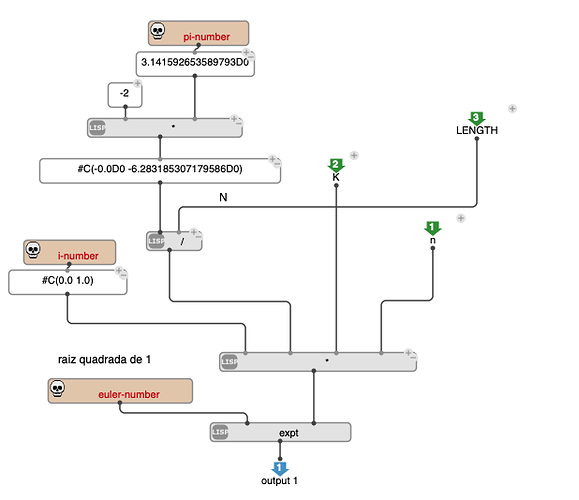Apparently, I already did. Here is Mathematica’s result for the DFT of {1,0,0,0,1,0,0,1,0,0,0,0,0,0,0,0} (16 elements):
{3. + 0. I, 0.0761205 - 1.38268 I, 0.707107 + 0.707107 I, 0.617317 + 0.0761205 I, 2. + 1. I, 1.38268 - 1.92388 I, -0.707107 + 0.707107 I, 1.92388 + 0.617317 I, 1. + 0. I, 1.92388 - 0.617317 I, -0.707107 - 0.707107 I, 1.38268 + 1.92388 I, 2. - 1. I, 0.617317 - 0.0761205 I, 0.707107 - 0.707107 I, 0.0761205 + 1.38268 I}
You can test it directly with bach.fft’s own tutorial (and yeah, it’s called FFT but it actually computes the DFT as they explain it themselves.)
![]()


